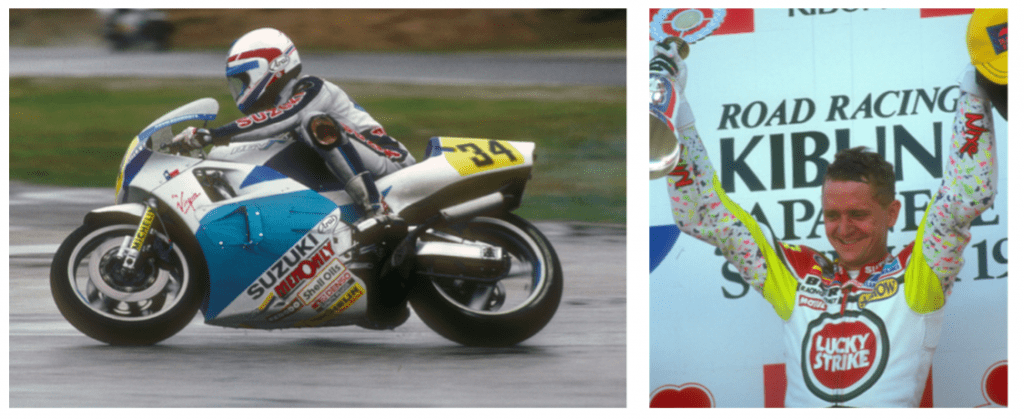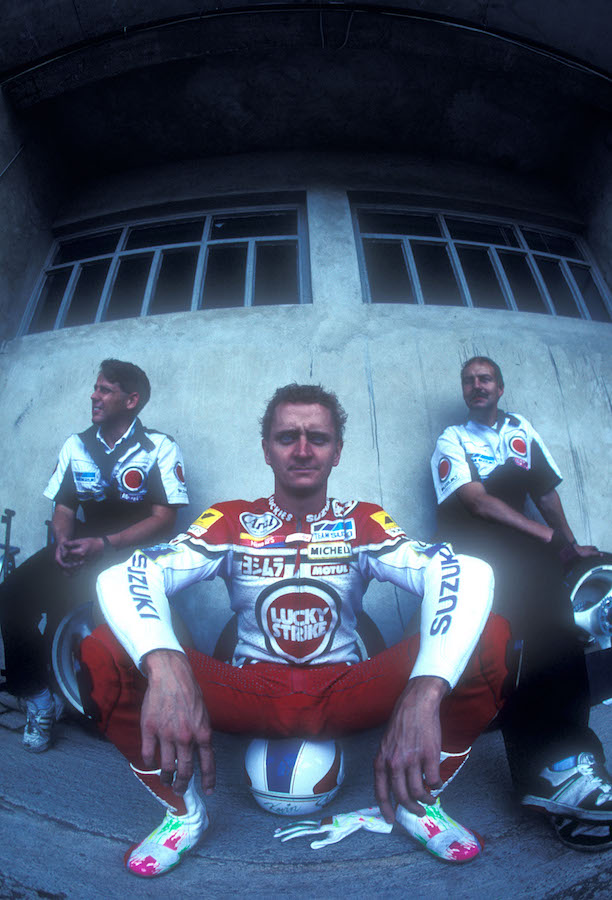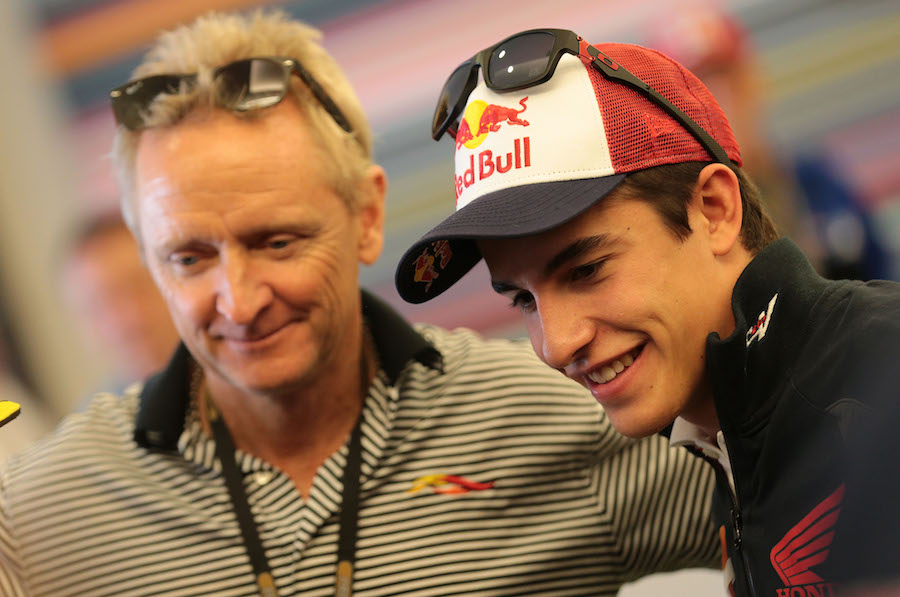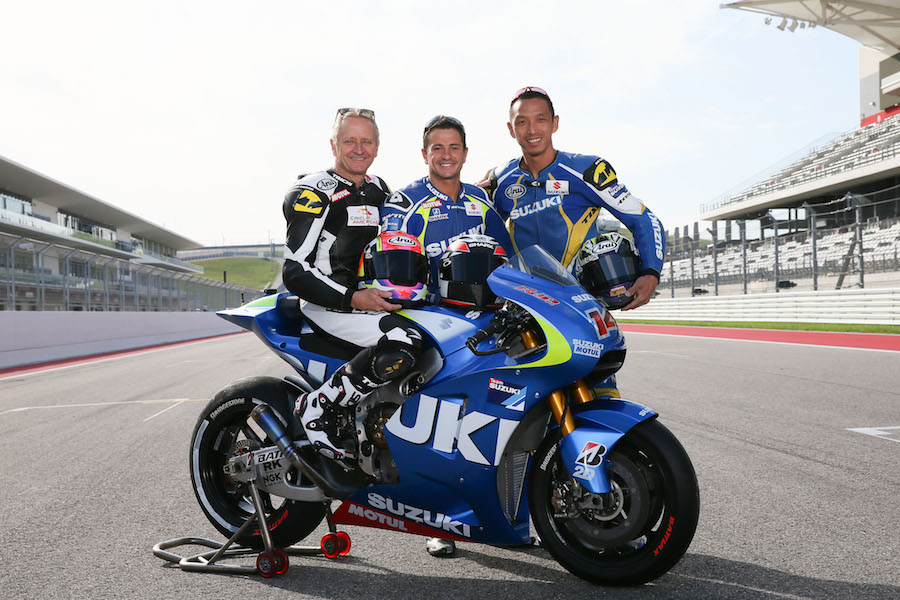Larger than life and mercurially quick, Kevin Schwantz has enjoyed a long love affair with Oz
AMCN caught up with the Texan while he was filming a safety promo for the Transport Accident Commission at Broadford. The 1993 world 500cc champion was fresh off a dirtbike having spent two weeks with former Suzuki GP teammate Daryl Beattie on one of Daz’s Outback Adventures.
It seems like Australia’s become a second home. You raced NASCARS and V8s in the 1990s, the 2000 Australian Safari and now classic bikes. What else have you done in your recent trips Down Under?
I’ve just finished two weeks with Daryl Beattie on the Canning Stock Route, so I’ve probably seen some of Australia that some Australians haven’t seen. Daryl rode the Africa Twin every day, he cooks dinner every night, he’s very busy on his trips, and he’s the same likeable guy he always was, for sure.
Speaking of Aussie riders you’ve raced against, how’s your relationship with them now 20 years after retirement?
I’ve seen Wayne [Gardner] at a couple of different grands prix; at Barcelona last year I saw him, and he and I did MotoGP Legends last June at Jerez and I spent three or four days with him. Mick [Doohan] I don’t see a lot, but the last couple of times I’ve come over for the Australian Grand Prix at Phillip Island I’ve managed to catch up with him for half an hour or so, and we did some promotional stuff together.
My relationship with most of the guys I raced with is pretty good. Eddie [Lawson] and [Kenny] Roberts … we don’t see each other a lot. But Freddie [Spencer] did the MotoGP Legends too, so I saw a lot of him then, and he was here in Australia for the Barry Sheene Festival of Speed at Eastern Creek too.

You ran a riding school for many years in the US, but it’s now dormant. Why?
I started the school in 2001 at Road Atlanta, then moved to Birmingham, Alabama in 2008, and in 2012 we moved back to Atlanta, but without the support of either Honda or Suzuki who supported us throughout that period. With motorcycle sales dropping the way they have, we decided to stop the school.
I still work with kids any opportunity I get, but I shut the school down. I still hope that motorcycle sales in the US will get to the point that Honda, Suzuki and some of the other manufacturers will want to support a program like that again. What’s happening in America now is mostly just organised track days, and that’s not the setting I need to be able to teach and get across to fellow motorcyclists.
Did you teach road racing skills or road riding skills?
I was teaching riding skills. Every skill I try to teach is one I used to road race professionally, so it’s basic stuff: visual awareness, body position, braking techniques. It’s all stuff that you may not use absolutely every day riding on the street, but you’ll need it and use it when something unexpected happens, like when a car pulls out – take evasive action, jump on the brakes and be able to steer around the problem. I was teaching things on a track that can be applied to everyday riding.

Schwantz, Yoshimura Suzuki, Suzuki MotoGP test, Circuit of the Americas, 2014.
Do you ride on the street?
Not a lot. If I ride on the street, I enjoy riding my older motorcycles that aren’t quite as fast. I’m not tempted to do wheelies on the street, though I might when I get on the track!
You started out on trials bikes, moved to motocross then superbikes and had your first race on a Suzuki 500 just over 30 years ago
I started road racing just before I was 20. I think the irony of it is that I started on the slowest form of motorcycling there is, trials, and I ended up on the fastest. From trials riding to motocross and to road racing, a motorcycle reacts the same way. When you’re taught trials riding you weight the pegs and you really steer them the same way with the footpegs, it’s absolutely the way it is. Riding the bike, controlling the slide, everything applies whether you’re going two miles per hour or 200.

Schwantz, Yugoslavia 500GP 1990
You’ve had the opportunity to ride more modern GP bikes. How was that?
I tested Suzuki’s MotoGP bike in Austin two years ago. I was like “Wow!” The bike is amazing, it does absolutely everything. I was six seconds off the pace, so that makes good sense to me. When I raced, if someone wanted to test my motorcycle and tell me what they thought about it, they better be on the same pace. So for me to ride a MotoGP bike six seconds off the pace, it should do everything really well. The photos that I saw of myself riding the bike – tucked in down the back or front straight, the front wheel was in the air – but I do not ever remember the bike wheelying. The electronics have done so much to the bike. When I come out a corner, and it starts to wheelie, it knows that and controls it, even though I’ve got the throttle wide open. The bike keeps going and the front wheel doesn’t ever get too high in the air. To me, it seems it’s taken a little bit of the rider away from it. It was fun to ride, but not nearly as exciting as the old 500s.
This generation of top riders are called ‘aliens’. Do you think the core skills are still the same, or are today’s riders developed by their bikes rather than the other way around?
That’s a good question. I think the bike develops the rider rather than the rider developing the bike these days. Physically, it’s probably still the most difficult thing to do in any sport there is, to make a grand prix bike goes as fast as Valentino, Lorenzo or Márquez go around a racetrack, the amount of G-force involved in stopping, the acceleration when they launch off the line. It’s probably a bit more physical than it used to be, but with all the electronics … well, Valentino has had to change his riding style to adapt to the more electronic motorcycle. Five years ago he was having to figure out how to hang off the bike more because the electronics kind of gives that protection. The riders are hanging off more because that’s the only way to get the thing around the corner faster – by not staying up on top of the motorcycle and getting ready for it to slide. That’s covered now with the electronics.

Schwantz and Marquez, Grand Prix of The Americas, 2014
I suppose you have many, but what’s your best memory of racing bikes in Australia?
It wouldn’t be either Phillip Island Grand Prix, that’s for sure! I crashed on the first lap of the first one (1989) and I crashed on the last lap of the other (1990)! But even though I never got a result at the Island, I loved racing there – I loved how close in everyone can get there, how everyone can get touchy-feely and the same goes for Eastern Creek. I had better results there – I won the Grand Prix in 1993 – but the Australian fan support has always been very important to me.
I have one special memory from my last GP in Australia. In ’95 at Eastern Creek in morning warm-up, my engine locked up. I crashed and threw it down the front straight away. It was the first grand prix of the year and I crashed. I finished sliding and I’d made up my mind I wasn’t going to race that day. I was finished, I had had some shitty luck in ’94 and ’95, I wasn’t physically 100 per cent fit and I got up with the intention of walking to the pit wall and watching the rest of morning warm-up, and then telling the team I wasn’t going to race that day. But when I stood up, the Australian fans all cheered and I thought, ‘Ah hell, I can’t disappoint those guys’, so I got up off my ass, ran across the track and jumped on my spare bike, and I rode three grands prix just on the support that the Australian fans gave me.
Are Australian fans more supportive than fans at other countries?
Well yeah, because I can understand them! But when I crashed at Phillip Island the second year at Turn 1, I walked back to the pits and I got, “Kevin, you’re an idiot! Kevin Magee deserved that ride – you suck!” and I thought, “You gotta be kidding me!”

Schwantz 34, Rainey 17, Sarron7, Lawson 3, De Radigues 12, Gardner 1, Start Italian 500GP, 1988
You’re here to do a safety promotion with the TAC. What’s the thrust of it?
Just proper equipment. If you’re going dual-sport riding, riding on the street or on a track you need to make sure you wear the proper safety equipment and also prepare yourself for it. Whether it’s an adventure from Melbourne or wherever down to the grand prix, you’ve got to be alert – you can’t be sleepy, you can’t be tired, you’ve got to take riding seriously. On a motorcycle you’ve got so much less visual awareness from other road users, you’ve almost got to ride like you’re invisible. It’s more about preparing yourself properly for the ride with proper safety equipment is the gist of it.
Mental preparation as much as physical?
Absolutely.
Some might say that message should be aimed at car drivers, not just motorcycle riders?
Exactly. The car guys need to prepare because they need to be watching out, and what we need to be doing as motorcyclists is the same. It’s not all of us, but there are those guys that like to do the stand-up wheelies down the lanes of cars when traffic’s as bad as it can be on the freeway. That does NOT win us a lot of fans amongst the four-wheeled group.

Schwantz, De Puniet, Aoki, Suzuki MotoGP test, Circuit of the Americas, 2014.
Have you’ve seen Broadford before?
When I was out here for the Barry Sheene Festival of Speed earlier this year, I came out here with Mick Hone. It’s a great facility and I asked if it’s open every day, if you can go ride motorcycles there every day. For someone who loves motorcycling you can bring out your dirtbike, ride the motocross track, there’s trail riding and the road course.
What’s in your collection now?
The two most significant streetbikes that I have are a 1964 BMW R69S, and a 2013 Triumph Steve McQueen that’s basically a Bonneville with the matte green finish. They’re nice motorcycles to ride. They’re very comfortable, and by no means am I going to be breaking the speed limit on either one of them.
Words Steve Kealy
Photography GOLD & GOOSE